Our house was making some unusual noises as the structure dealt with temperatures falling from the
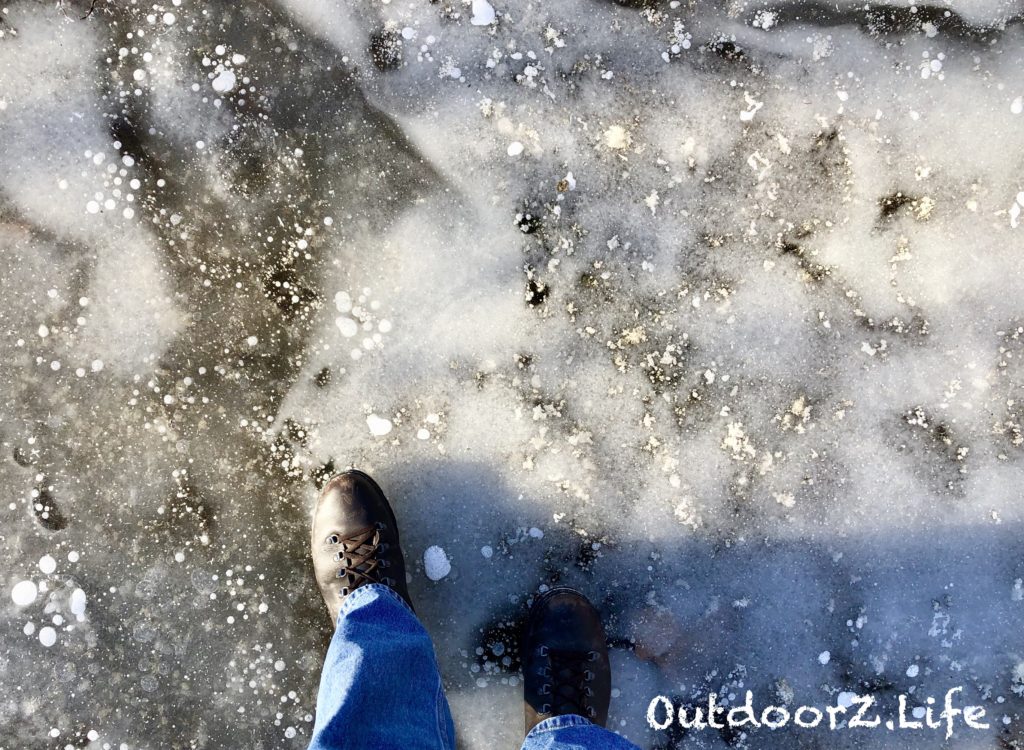
Footprints on snow-covered trails leave messages for others who come after you. The prints you leave behind in the snow confirm that it’s not crazy to be out in inclement weather. Assuming that you stick to the trail, your footprints can provide
On this particular morning, when most were determined to stay hunkered down indoors, the topic of frigid temperatures came up in a family group text. One of my daughters jokingly typed, “I guess Dad will go hiking.” I responded with, “A
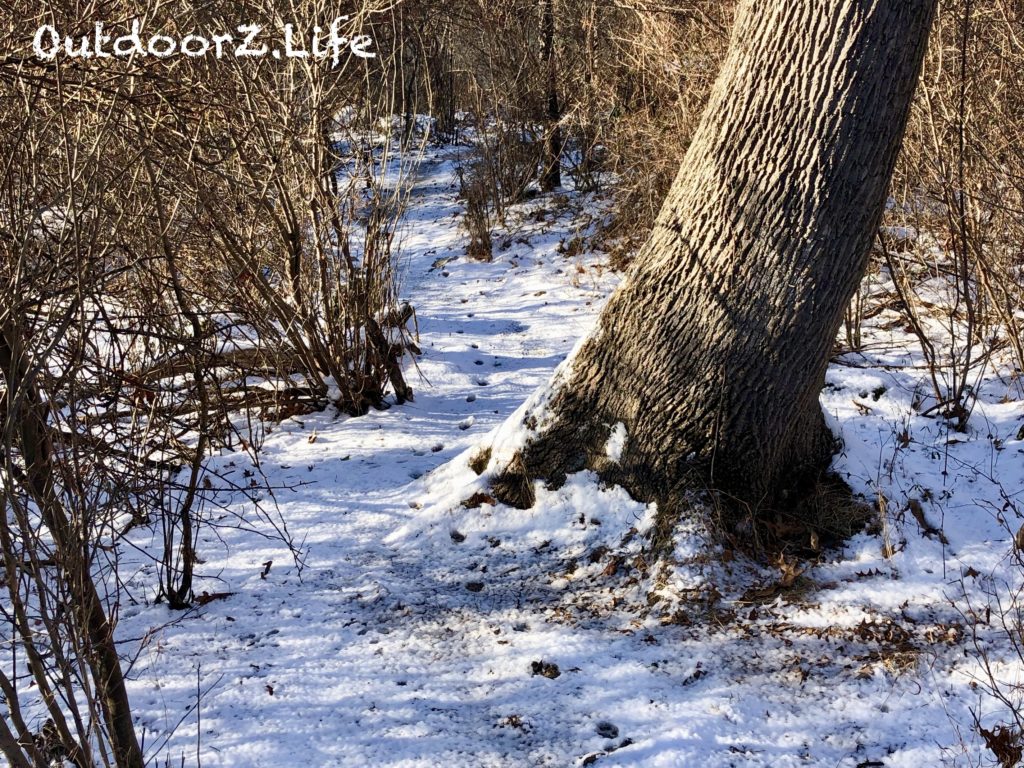
After my hike, I wrote down a few cold weather hiking tips learned over the years. I hope these encourage others to safely venture out during the winter months.
Hiking tips for cold weather – general safety:
- Know yourself
- Know the trail
- Know hunting seasons
- Know the weather
Know Yourself:
When temperatures drop to abnormal levels, it becomes more important to plan wisely. In the extreme cold, there are fewer people on the trail to provide help. If injured, waiting in place is more difficult with no source of heat. To ensure a safe outing, you will need a realistic view of your capabilities. Start slow; choose a hike that you have done before and is within your ability, and then increase the mileage or difficulty from that success.
If you can, hike in a group. If you can’t, then ensure someone knows your plans. Sometimes I hike in groups, but mostly I hit the trail with my wife or alone. When alone, I communicate where I am going and what possible routes that I am thinking of taking. Smartphone apps like FindFriends on iPhones are another good way to communicate your whereabouts.
Know the trail:
Trails come in all shapes and sizes. Trails can’t be judged on mileage alone. My wife and I recently hiked a 2.5-mile trail in the same amount of time that we regularly hike a 6-mile trail in. The difference was that the shorter path had a steep elevation gain which was followed by rock-hopping along a ridgeline. Additionally, snow made the rocks and downhill sections slippery and slow-going.
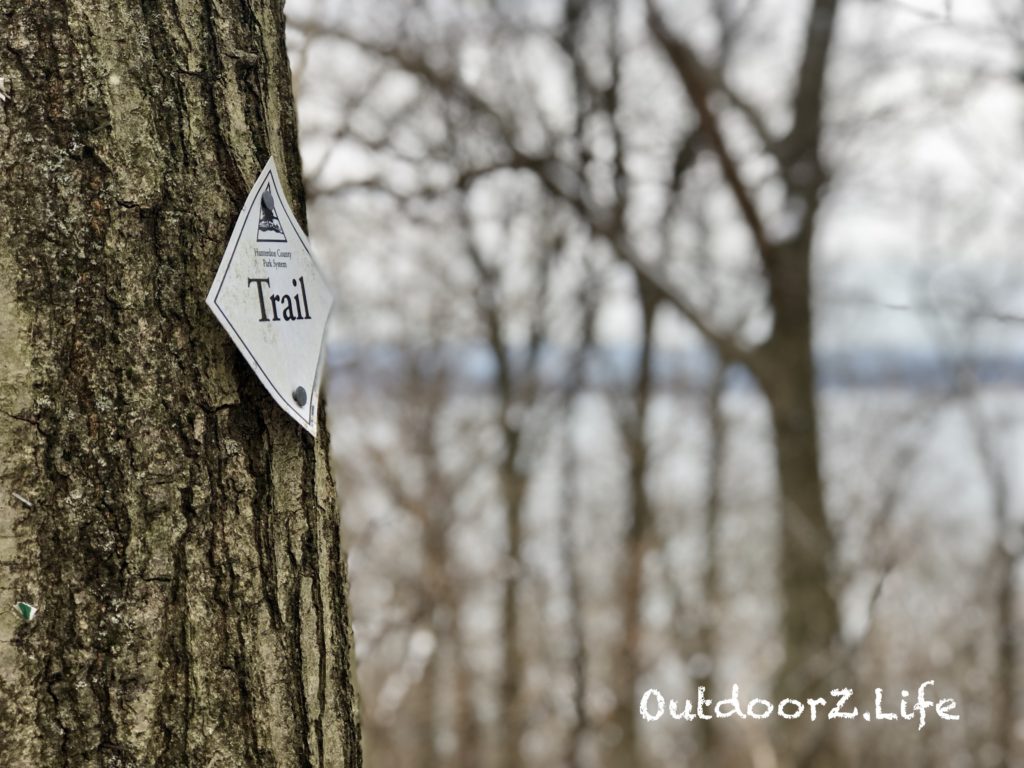
Especially in cold weather, choosing an appropriate trail can help make the experience a positive one. Elevation changes, rocky surfaces, wet weather, and how well the trail is marked are all things to consider when deciding on where to hike in the cold.
Know hunting seasons:
You might be thinking, “I don’t hunt so what’s the big deal?” Well, I was recently watching the North Woods Law TV show, and a game warden asked hikers if they had orange clothing to wear in the woods. They responded, “No, is that required?” The game warden said, “Nope, but it’s smart.” He then turned back and said, “Hey, either wear antlers on your head or wear orange!”
Most, if not all, hunters I know are responsible and would never shoot at anything unless they are 100% sure of what it is and that they had a clear shot. But you never know. During hunting season, stay on public trails, wear an orange-blazed cap and bright clothing, and talk so that anyone wearing camo in search of that elusive 10-pointer knows that you are human.
Know the weather:
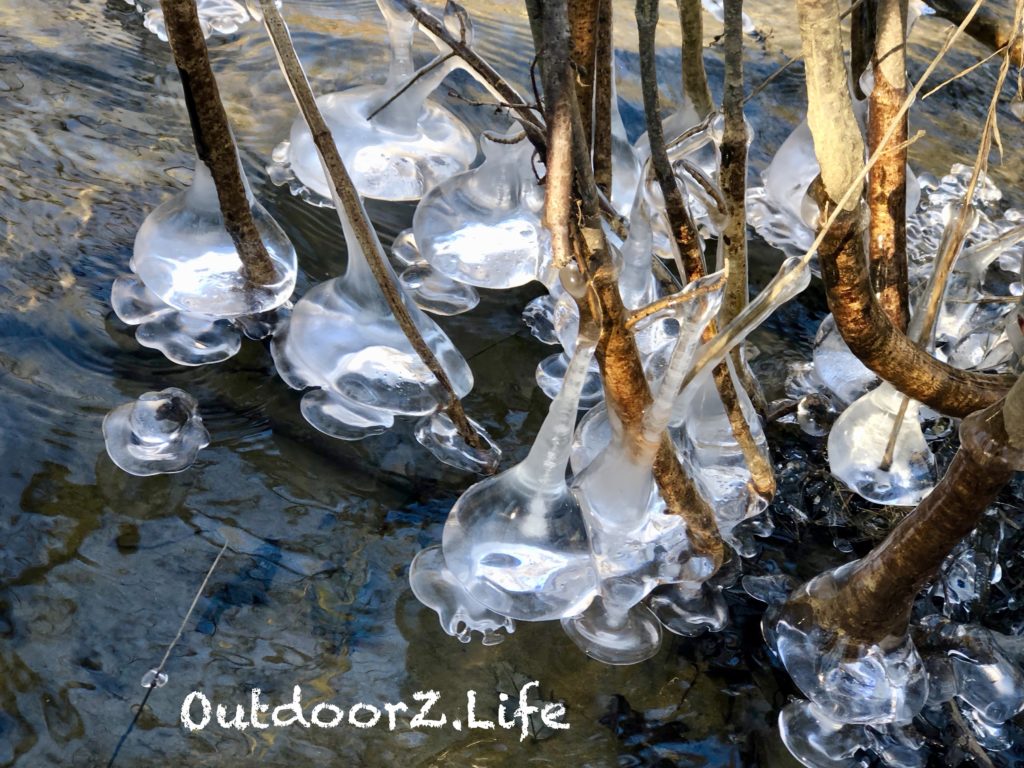
Hiking tips for cold weather – clothing:
- Your head
- Your core
- Your feet
- Your pack
Your head:
My favorite hat is my wool balaclava. I have owned this hat for over 15 years. My daughter, a friend, and I were backpacking on the Appalachian Trail (AT) when we met a thru-hiker. He was gracious with his time as he described his almost 6-month long adventure to us.
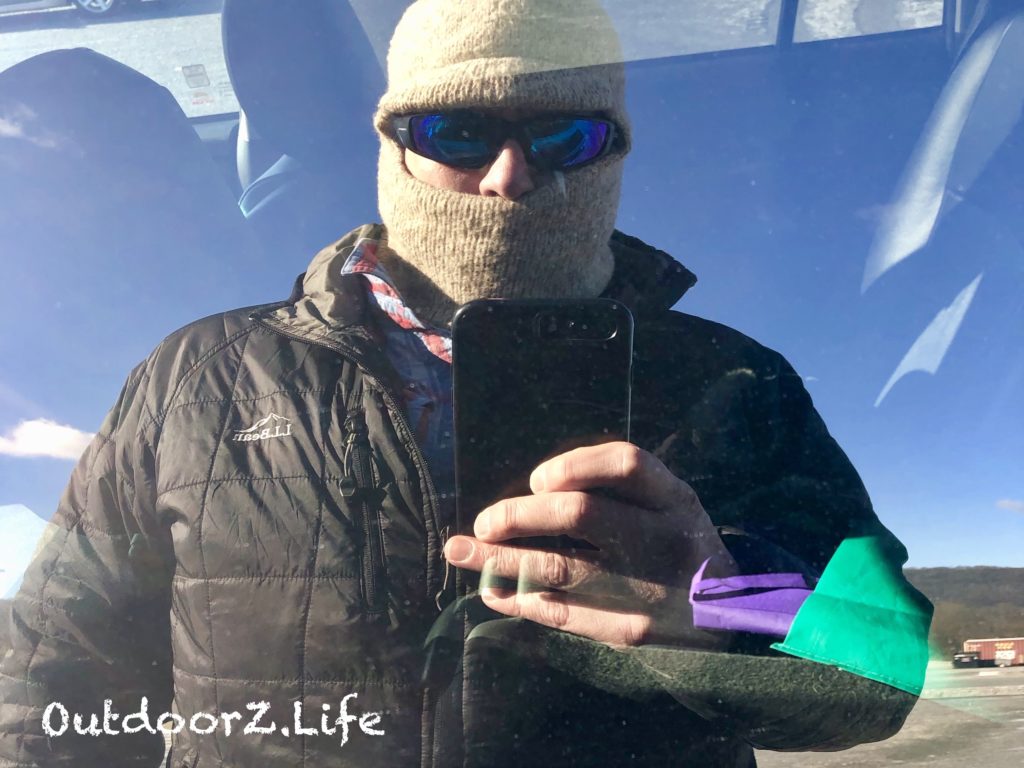
After we said goodbye and wished him luck on the final leg of his mission to Maine (Mt. Katahdin in Maine is the northern terminus of the AT), we hiked a few miles more on our southbound weekend trip. That’s when I found the thru-hikers’ hat. He must have inadvertently dropped it on the trail. I placed the cap in my pack and searched the internet when we got home but couldn’t find any mention of this hiker online. So, after several washes (thru-hikers don’t often shower you know), the wool balaclava has been one of my go-to hats in cold weather.
One mistake I made on this recent hike was with my eye protection. Since I had my wool balaclava to cover most of my head and face, I wore sunglasses. At one point in my hike, I had to walk a half mile or so directly into 30 MPH wind. While the rest of my body was warm, my forehead and the area around my eyes actually hurt. When it gets really cold and windy, remember to wear ski goggles to solve this problem. The ski goggles work nicely with balaclavas and cover up the remaining exposed areas of your face. Just remember, it’s not how you look that counts!
Your core:
When the temperatures get low, I wear thermals that are low cost, lightweight, and very warm. These items topped with jeans and a flannel shirt make for an excellent base. For my outer layer, I wear a packable jacket. I chose a jacket that is lightweight and is rated to only 20 degrees or so. This is enough warmth given the base layers and the heat that my body produces when hiking.
Remember, as you hike you will need to regulate your heat since you don’t want to sweat in extreme temperatures. I take off and put layers back on to make sure that my core temp is warm enough, and perspiration is avoided.
Your feet:
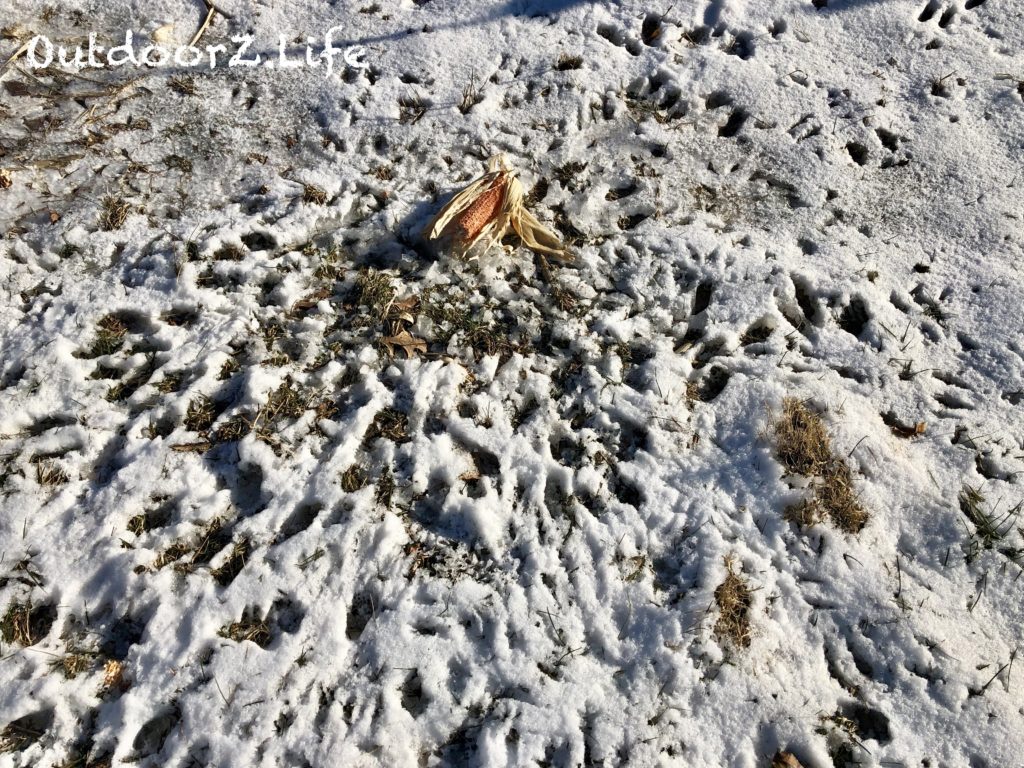
Blisters are formed when your skin rubs against socks or boots. To focus any friction away from my skin, I wear a thin sock covered by a standard athletic or wool sock. This ensures that the friction occurs between my socks and not my skin. I rarely get a blister when wearing two sets of socks.
Now to the little trick we discovered. On cold days, we use small hand warmers for our feet. We remove each hand warmer from their packaging, activate their heat by shaking them, and place them just over our toes, in between the two socks that we wear. This keeps our toes toasty warm inside of our favorite hiking boots.
Your pack:
I almost always carry a day pack when hiking 4 or more miles. A pack provides storage room for food, water, and extra clothing. Also, carrying a pack provides more weight and helps you train for longer hikes. I store safety items such as bear spray (in an accessible side holder), a fire starter, and a lightweight emergency blanket in my pack. These items give me, and my wife, more confidence when we tackle longer hikes or when I hike alone.
Since moderating your temperature is crucial and sweating in extremely cold weather can be dangerous, carrying a pack helps when adding or shedding layers since you have a place to store the clothing. Finally, there is one less obvious benefit to carrying a day pack. A pack provides wind protection for your back and keeps you warmer in the frigid conditions.
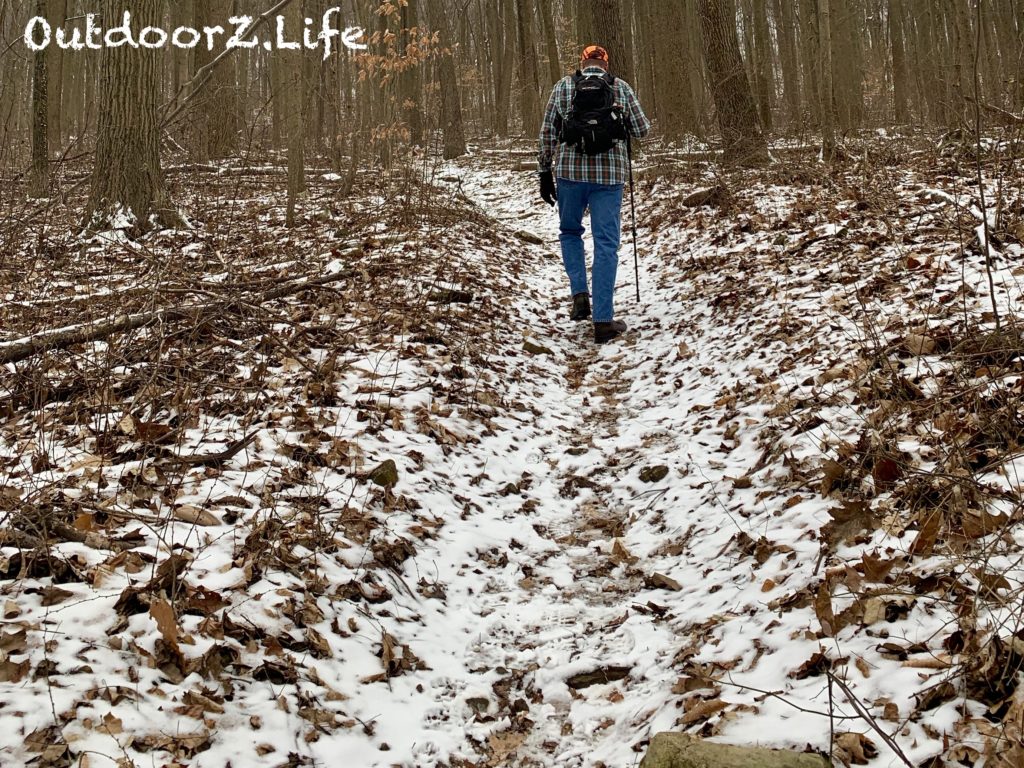
Alfred Wainwright, a British guidebook author, and illustrator said that “there’s no such thing as bad weather, only unsuitable clothing.” Considering where most of us live (
By Charlie Anderson.
See where this story/article ranks in popularity: Top 10 List
Click here to see a short story: “Winter Water Wonders”

Excellent in the frigid cold adventure!
Pingback: Hiking Kilimanjaro! - Live Life Outdoors